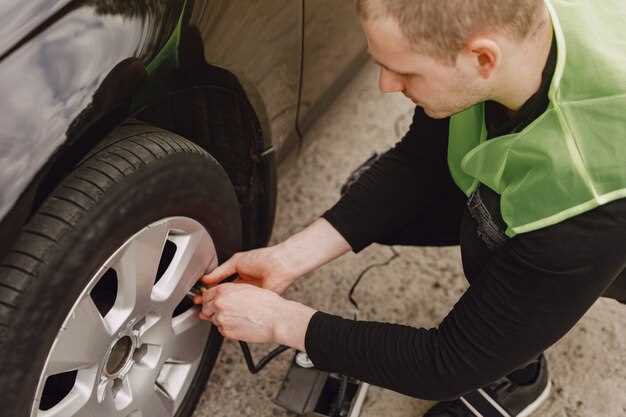How often should you rotate your Jeep’s tires?


A vehicle’s performance and safety heavily depend on the condition of its tires. For Jeep owners, this is especially crucial given the diverse terrains these vehicles often traverse. One essential maintenance task that can significantly extend tire life and enhance driving safety is tire rotation. Understanding the proper intervals for tire rotation is key to keeping your Jeep running smoothly.
Tire rotation involves moving the tires from one position on the vehicle to another to ensure even wear. This is particularly important for Jeep owners, as the unique design and driving style associated with these vehicles can lead to uneven tire wear. Regular tire rotation not only helps maintain optimal traction but also improves fuel efficiency and prolongs the lifespan of your tires.
So, how often should you perform tire rotation on your Jeep? The answer can vary based on several factors, including your driving habits, the type of tires you have, and the specific model of your Jeep. Generally, it is recommended to rotate your tires every 6,000 to 8,000 miles. However, check your owner’s manual for specific guidelines tailored to your vehicle. Regularly adhering to this practice will ensure that your Jeep remains safe, efficient, and enjoyable to drive.
Understanding Jeep Tire Wear Patterns
Tire wear patterns provide crucial insights into the health of your Jeep’s tires and can help determine the proper timing for rotation and care. Different patterns reveal specific issues that may need attention to ensure optimal performance and safety.
1. Center Wear: If the center of the tire tread is more worn than the edges, this often indicates over-inflation. Maintaining correct tire pressure is critical for extended tire life. Regular rotation can help mitigate this issue and maintain even wear.
2. Edge Wear: Excessive wear on the outer edges usually suggests under-inflation or misalignment. If you notice this pattern, it’s essential to check your Jeep’s alignment and ensure proper inflation levels. Rotating your tires can help prevent uneven wear across all tires.
3. Cup Wear: This pattern appears as high and low points along the tread and is often a sign of suspension problems or worn-out shocks. Regular maintenance and rotation can help identify and rectify underlying issues before they escalate.
4. Patch Wear: Wear that occurs on a specific section of the tire may be due to an obstruction or a problem with the alignment. Keeping an eye on tire wear allows Jeep owners to address potential issues early, ensuring better handling and safety.
Incorporating regular tire rotation into your Jeep’s maintenance schedule not only supports even wear but also extends the lifespan of your tires. Combined with diligent tire care, you can achieve optimal safety and performance on and off the road.
Recommended Tire Rotation Intervals for Different Jeep Models

Proper tire rotation is essential for maximizing tire life and ensuring optimal performance in various Jeep models. Generally, it’s recommended to rotate tires every 6,000 to 8,000 miles, but specific intervals can vary based on the model and its drive system.
For the Jeep Wrangler, known for its off-road capabilities, rotating tires every 6,000 miles is advisable. This frequency helps maintain even tread wear, especially due to the vehicle’s inherent weight distribution and rugged use.
The Jeep Grand Cherokee typically benefits from tire rotation every 7,500 miles. This model often experiences a mix of on-road and off-road driving, making consistent rotation crucial for maintaining tire health and performance.
In the case of the Jeep Cherokee, a rotation interval of 5,000 to 7,500 miles is recommended. Regular rotations help to manage wear, as this vehicle may experience varying load conditions depending on driving scenarios.
Lastly, for the Jeep Renegade, it is best to follow a rotation schedule of every 6,000 miles to prevent uneven wear, especially since this compact SUV has a different handling dynamic compared to larger models.
While these intervals provide general guidelines, it’s essential to consult your owner’s manual for your specific model’s recommendations. Regular tire rotations can significantly extend the life of your tires and enhance overall driving stability and safety.
Signs That Indicate It’s Time for a Tire Rotation

Regular tire rotation is essential for the care of your Jeep’s tires, ensuring even wear and extending their lifespan. Observing specific signs can help you determine when a rotation is necessary.
One of the most noticeable indicators is uneven tread wear. If you see that the front tires are more worn than the rear or if one side of a tire appears to be more worn than the other, it is time to have a rotation performed. This uneven wear can lead to compromised traction and handling.
Another sign is a vibration or noise coming from the tires while driving. If you notice a change in how your Jeep drives or excessive noise at certain speeds, it could indicate that the tires are not wearing evenly and require rotation. Ensuring proper alignment and rotation can alleviate these issues.
Additionally, if your Jeep has been subjected to frequent off-road driving or harsh conditions, it may necessitate more frequent tire rotations. The rigorous use on uneven surfaces can lead to faster wear, highlighting the need for rotation to maintain optimal performance.
Lastly, keep track of your mileage. Most manufacturers recommend rotating tires every 5,000 to 7,500 miles. If you haven’t rotated your tires within this mileage range, it’s a good practice to have them rotated regardless of visible wear signs, as preventive care can save you from more costly replacements down the road.
